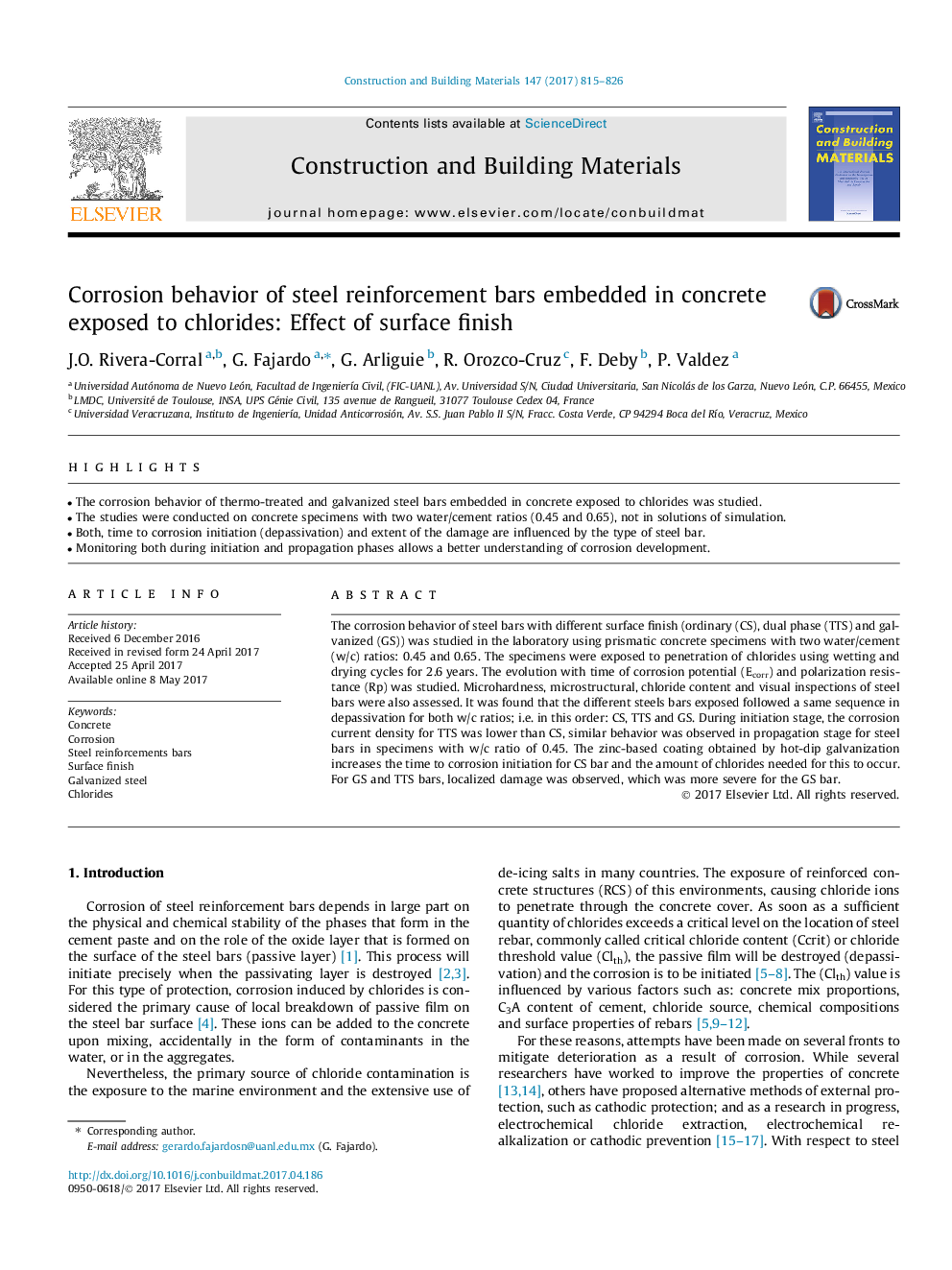| Article ID | Journal | Published Year | Pages | File Type |
|---|---|---|---|---|
| 6480626 | Construction and Building Materials | 2017 | 12 Pages |
â¢The corrosion behavior of thermo-treated and galvanized steel bars embedded in concrete exposed to chlorides was studied.â¢The studies were conducted on concrete specimens with two water/cement ratios (0.45 and 0.65), not in solutions of simulation.â¢Both, time to corrosion initiation (depassivation) and extent of the damage are influenced by the type of steel bar.â¢Monitoring both during initiation and propagation phases allows a better understanding of corrosion development.
The corrosion behavior of steel bars with different surface finish (ordinary (CS), dual phase (TTS) and galvanized (GS)) was studied in the laboratory using prismatic concrete specimens with two water/cement (w/c) ratios: 0.45 and 0.65. The specimens were exposed to penetration of chlorides using wetting and drying cycles for 2.6Â years. The evolution with time of corrosion potential (Ecorr) and polarization resistance (Rp) was studied. Microhardness, microstructural, chloride content and visual inspections of steel bars were also assessed. It was found that the different steels bars exposed followed a same sequence in depassivation for both w/c ratios; i.e. in this order: CS, TTS and GS. During initiation stage, the corrosion current density for TTS was lower than CS, similar behavior was observed in propagation stage for steel bars in specimens with w/c ratio of 0.45. The zinc-based coating obtained by hot-dip galvanization increases the time to corrosion initiation for CS bar and the amount of chlorides needed for this to occur. For GS and TTS bars, localized damage was observed, which was more severe for the GS bar.
